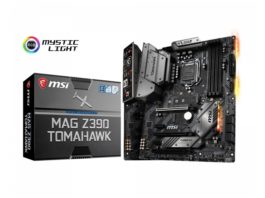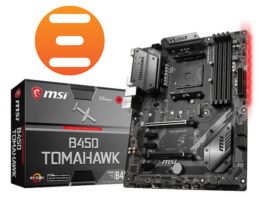MAXIMUS IX APEX Specifications
| Core Specifications | |
|---|---|
| Form Factor | E-ATX |
| CPU Socket | 1151 |
| Chipset | Intel Z270 |
| RAM Memory Support | |
| Memory Type | DDR4 |
| Memory Channel | Dual (2) |
| Memory Type (ECC) | Non-ECC |
| Memory Type (R/U) | UDIMM (Unbuffered) |
| Memory Speed (Mhz) |
|
| Max. Memory Capacity | 32GB (2x16GB) |
| Audio | |
| Audio | ROG SupremeFX 8-Ch. HD Audio S1220A |
| Graphics Support | |
| Primary GPU Interface | PCIe 3.0 (x16) |
| SLI Support | 2-Way SLi |
| Crossfire Support | 4-Way CrossFire |
| On-Board Graphics Connectors |
|
| Internal Connectivity | |
| Expansion Slots |
|
| SATA Support | SATA3 / M.2 |
| RAID Support via | SATA |
| Storage Mode Support |
|
| Internal I/O |
|
| External Connectivity | |
| Network Interface Type | Wired Gigabit LAN (10/100/1000) |
| Network Chip/Modules | 1 x Intel® I219V (Gigabit LAN) |
| Rear I/O Connectors |
|
Overclocking in general, might not be as important is it may have been in the past, but people still cherish all things free and accessible. I am a firm believer that overclocking can be a deciding factor when I’m looking for a motherboard for my own personal rig, but how important is it to you? If it’s important and you demand top performance from your system, then feast your eyes on the ROG Z270 MAXIMUS IX APEX motherboard…
The ASUS ROG MAXIMUS IX APEX motherboard has been built from the ground up using only the finest and top quality components available to create the ultimate overclocking board on Intel’s Kaby Lake Z270 chipset. Don’t just take my word for it however, you only have to see the sheer amount of world records this particular motherboard has to its name, even the day it launched it was top dog and it seems nothing can even compete.
From its E-ATX form factor all the way to its 2 x 8pin 12V CPU power inputs, the MAXIMUS IX APEX is built primarily for overclocking and if the plethora of overclocking focused features wasn’t enough to convince you, then the 2 x DIMM memory socket on such a large PCB should be a huge indicator. Having fewer memory DIMMs featured on a motherboard allows for shorter memory tracks to the CPU socket which reduces latency and general memory performance. The results of our testing with the Intel Core i7-7700K against other Z270 motherboards not only shows the APEX performs well with memory, but it shows the potency of optimised memory DIMMs; quality and performance over quantity here.
Pre-built into the BIOS is a variety of overclocking profiles from some of the best overclockers in the business, such as Roman Hartung or Der8aur as he is more widely known. There are multiple profiles and not only does this take the sting (or fun) out of manually overclocking your processor, but it gives even the most novice of users some hope of taking their new Intel Core i7-7700K processor above stock with relative ease. The same can be said about the memory profiles with most type of ICs from DDR4 manufacturers at least featuring a profile or too! All this being said, I even managed to achieve a solid and stable overclock of 5.2GHz at 1.4v, something I might add that no other Z270 motherboard I have tested has thus far achieved; a true testement to the overclocking potential of the APEX.
Just because the ROG MAXIMUS IX APEX is geared towards overclocking that the enthusiast, gamer or general user has been forgotten about…no no no! All the regular Z270 MAXIMUS IX software and features are present, even down to ROG SupremeFX and the very decent onboard ALC1220 audio chip. Obviously, there were some sacrifices made such as built-in Wi-Fi, but I have never been known to game over wireless anyway and to me, it’s not such a big deal for this particular model to not include Wi-Fi capabilities. The most unique inclusion to the APEX is the DIMM.2 slot; this allows for dual M.2 drives to be run in RAID0 at the top end of the motherboard to allow for mounting of a cooling fan. This is to prevent thermal throttling as the fastest and newest M.2 SSDs can run really hot and when they are positioned underneath the graphics card slots, it increases the risk for overheating.
Is the MAXIMUS APEX good? Yes, it’s absolutely superb and if you follow my overclocking exploits over on HWBot (My profile), you’re going to see a lot of submissions with the Intel Core i3-7350K & i7-7700K processor in the coming couple of months. If that doesn’t give you an insight to why the APEX is top, then maybe the well deserved Platinum award will! Overall the ASUS ROG MAXIMUS IX APEX E-ATX motherboard combines all that ROG style with a true ‘built from the ground up’ design that will make extreme overclockers rejoice. Regular consumers may find better value in other motherboards such as the MAXIMUS IX Hero which for the money, offers a better feature set towards gamers and the general user.
The bottom line is, if you want performance and to make the most of your Intel Kaby Lake processors at high speeds, then the APEX is certainly the board you want, especially for memory overclocking!
Huge thanks to ASUS ROG for sending the MAXIMUS IX APEX in for review.
-
Performance
-
Design
-
Value
Summary
Pros:
– The best Z270 motherboard for overclocking, PERIOD!
– Features a unique X-shaped PCB which allows AURA SYNC RGB lighting to shine through
– Tons of overclocking features including LN2 mode and a switch to disable cold boot bugs when extreme overclocking
– Yields the best memory performance of all Z270 motherboards tested
– Despite all the overclocking features, it still features a relatively reasonable price
– Comes packed with all the usual Z270 ROG features such as ROG SupremeFX
– DIMM.2 is a very nice feature and is certainly unique
Cons:
– None






